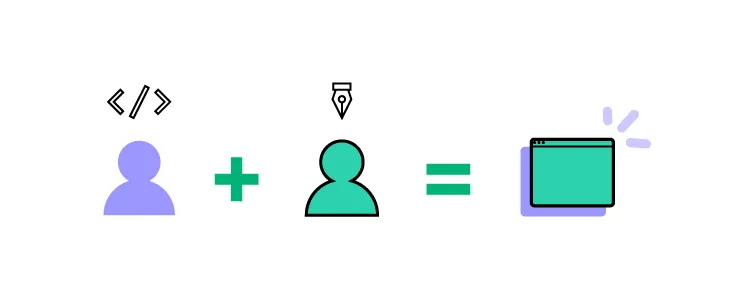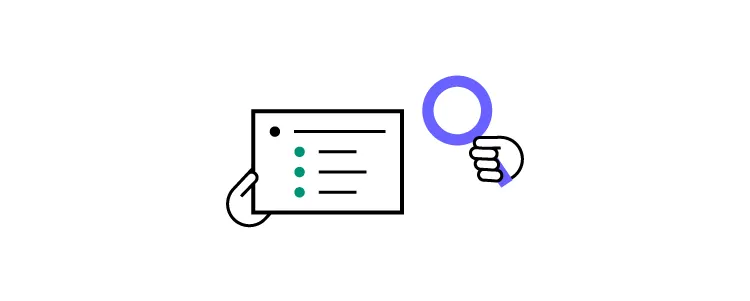Mobile UI – What it is & How to Ace Mobile App Design

With an estimated 14.1 billion smartphones globally, and 350 billion mobile apps downloaded in 2021, getting your mobile UI design right is paramount. The trend is clear: with almost half of all devices connected to the net being mobile, the desktop is no longer king. People like using apps – they like the speed and functionality, and they appreciate the “do anything anywhere” ethos.
With that in mind, we’d like to shed more light on what mobile UI is, how it’s different from desktop design, and how you can make sure your designs stand out from the crowd. Let’s begin.
What Is Mobile UI?
A mobile user interface, or mobile UI, is the display or screen on a mobile device. It’s the space where users can interact with what’s on the screen – from menu buttons to text fields (and everything in between, depending on whether users can tap, scroll, swipe, type, or just see it).
Most of these user interactions are touch-based and happen on colorful touch screen displays that are bursting with high-level interactions. Naturally, basic mobile UI design principles differ from those of a traditional desktop UI. After all, users are, by definition, on the move; control is limited, giving new meaning to the phrase ‘all thumbs’. Actions and information need to be big, bold, clear, and simple.
Why Is Mobile App UI Design Important?
As mobile adoption continues to rise year-by-year, it’s time to develop a mobile-first strategy, embraced by the likes of Facebook or other social networks, who make sure their iOS and Android apps offer a polished user experience on hand-held devices.
After all, when users have more choice and freedom to find mobile applications that work for them, a poor user experience can easily devalue your brand, hurt your revenue, and disengage your users.
Aside from investing in mobile applications, many ecommerce stores see the increase of purchases coming from mobile. If an online store doesn’t optimize checkout experience, usability or their mobile app design, they may lose market share or even render themselves obsolete.
8 Mobile UI Design Tips Every Designer Should Follow
To help you navigate the mobile UI realm, we’ve created a list of some of our top mobile app design tips.
1. Ensure that there’s a clear vision of the mobile app
Let’s start with some UI basics that you probably figure out during the early stages of the product design process: the vision.
The vision is what’s shared right at the start of your mobile app design. It should be clearly (and, if possible, visually) communicated to all key stakeholders, so that everyone, regardless of department, knows the purpose and goal of the project.
This stops people from working on what they think the vision is or should be, pulling in different directions, adding more and more features (and missing all those deadlines).
In short, with a clear vision, the entire design and development process is made more efficient. Everyone understands what success will look like, their roles on the project, and what’s required of them.

There are loads of different factors that will inform your overall vision, including business objectives, user needs, competitive landscape, etc.
2. Improve your product design in iterations
‘Progressive enhancement’ is a way to continually refine your design until it’s at the level you need it. So, instead of spending time, money, and other precious resources trying to create the perfect version in one go, you start with a basic concept– it may be in a form of a wireframe, mockup or lo-fi prototype that your team can refine until it matches the overall vision of the mobile application.
It’s not any different to the way software developers approach developing modules. Bit by bit. Little by little. That’s not as difficult as it might seem at first.
Using design tools, such as UXPin Merge, you can quickly begin prototyping mobile apps with fully interactive code components that look and act as the real Android or iOS app. Not only does it ensure the speed and efficiency of work, but it also come in handy when you run usability tests.
You can quickly put together prototypes that look and feel like a real mobile app, test the user experience design, and iterate based on tests. The UI elements you use for prototyping are live code. That means, these components look and act the same as the ones used by your development team for production.
3. Uniformity is key
Your designs should be consistent across the board, from buttons and icons to brand colors.
Visit Amazon on your mobile. It’s a masterclass in consistency for mobile app UI design. Every design aspect is uniform, from the color palette to page layout, whether you’re buying a new microwave oven or a second-hand book.
This isn’t just because it’s pleasing to the eye. It’s about helping users familiarize themselves with the app, so that eventually, they won’t even need to think about what they’re doing. Every action will be intuitive and engaging.
To ensure uniformity, you might find it useful to add a mobile UI kit to your design system.
Be specific where necessary. For example, are all your call-to-action buttons in a particular color? Must certain fonts be used or avoided? Ask yourself those questions before you need to answer them.
4. Make sure your splash screen is flawless
A splash screen should grab the user’s attention – and fast. While your app boots up in the background, you can use your splash screen to engage your users. Because, let’s face it, in the age of instant-everything, no one wants to sit, wait, and do nothing.
Eye-catching illustrations. Unmissable headlines. Brand promotion. User tips. These can all keep users engaged and stop them from quitting and uninstalling at the first hurdle. Consider adding a progress bar, especially if your app takes a while to load. Users like to know something is happening.
Just don’t overdo it.
Your splash screen should be simple. The app name, your logo, a background image – it doesn’t need to be fancy to make a great first impression.
5. Present stats in the clearest way possible
Layout is an important mobile UI design factor – especially when presenting stats and data. If these are a core part of your app, then take time to identify ways to make them easy to read, interpret, and extrapolate.
Ask: Is the text readable? Can users easily parse charts and graphs? Are icon meanings clear?

It might also be useful to consider how users can get that information off the app and onto other devices, for example, when using an accounting app.
6. Design for fast page loading
Users today are more impatient than ever. How often do you get tired of waiting two whole seconds for a video to play? Or a website to load? Because almost everything online happens instantly and in real-time, we have a low tolerance for slower-loading pages and apps.
In general, you should design for minimal page loading, which is about three seconds. Any longer than that, and your users start walking away.
What does that look like?
- Ensure a clear visual hierarchy and navigation
- Make sure images are small (and there aren’t too many of them)
- Use contract, color, and whitespace to improve visibility and convey the right emotions
- Typography is important – use font sizes 11pt or higher and limit the use of fonts to just two
- Make every element count – can you replace text boxes with icons? That background image might look pretty, but is it necessary?
Remember, 94% of mobile users are using portrait mode, so you have to communicate a lot of information along a very narrow plain.
7. Remember about mobile accessibility
Accessibility is more than just a buzzword. It’s a whole design ethos. Microsoft is a great example of this, where accessible design (across computing, gaming, and mobile) essentially informs the entire company culture. And it’s something worth adopting in your own team. After all, it’s a great way to reach a broader audience, and show you value all your users.
But what does accessible design really mean for mobile users?
One of the most common features is ‘color-blind mode’. You’ll also often see options to increase the size of texts or interactive elements. This has a dual advantage, helping those with motor disabilities to navigate your app, as well as helping those with visual impairments. This, in particular, is useful for those countries with an aging population.

Conversely, your accessible designs will be different if your target users are children. Kids have very different physical and cognitive abilities to adults (and even to each other). And while, on the face of it, this seems more a concern for a UX designer, your UI design team needs to consider aspects such as fonts, colors, and other visual interactive elements.
This doesn’t mean you have to alter your entire mobile UI design. You can include accessibility options within it, such as color-blind mode. Just make sure to alert users to its presence in the settings menu. However, it’s best to use tools that have accessibility features built in, like UXPin, to create mobile UI designs that work for everyone.
8. Follow the UI design principles
UI design principles keep designs efficient and user-friendly. Designers don’t have to fumble with elements. Guessing, experimenting, leaving it all to chance. By adhering to predictable, and probably successful, mobile UI design principles, you can create experiences your users love.
UXPin’s Basic Principles of User Interface Design helps you improve the way you work and the way your users interact with your mobile app, be it an app on an Android or Iphone device (hint: it’s about making life easier for them).
Let’s take an onboarding as an example of the place where you can apply UI design principles. Onboarding screens have a clear purpose: they walk users through the major functions of the app. They also familiarize them with an app UI. The principles of designing a mobile UI for onboarding include providing clear signposts and keeping things simple.
What about the home screens? One of the UI design principles for mobile apps’ home screens is to have a clear visual structure.
Check out also: UX Principles of Mobile App Design!
Design a Mobile UI in UXPin
With more and more people connecting via mobile devices (and more and more apps being developed every year), getting your mobile app UI design right the first time is critical to attracting and retaining users. A great user interface should be simple to use, clear to navigate, and so completely intuitive and natural it’s almost invisible to the naked eye. UXPin can help you create digital products that work for designers, developers, and (most importantly!) mobile users. We have a bunch of tutorials for mobile UIs, templates and design inspirations.

